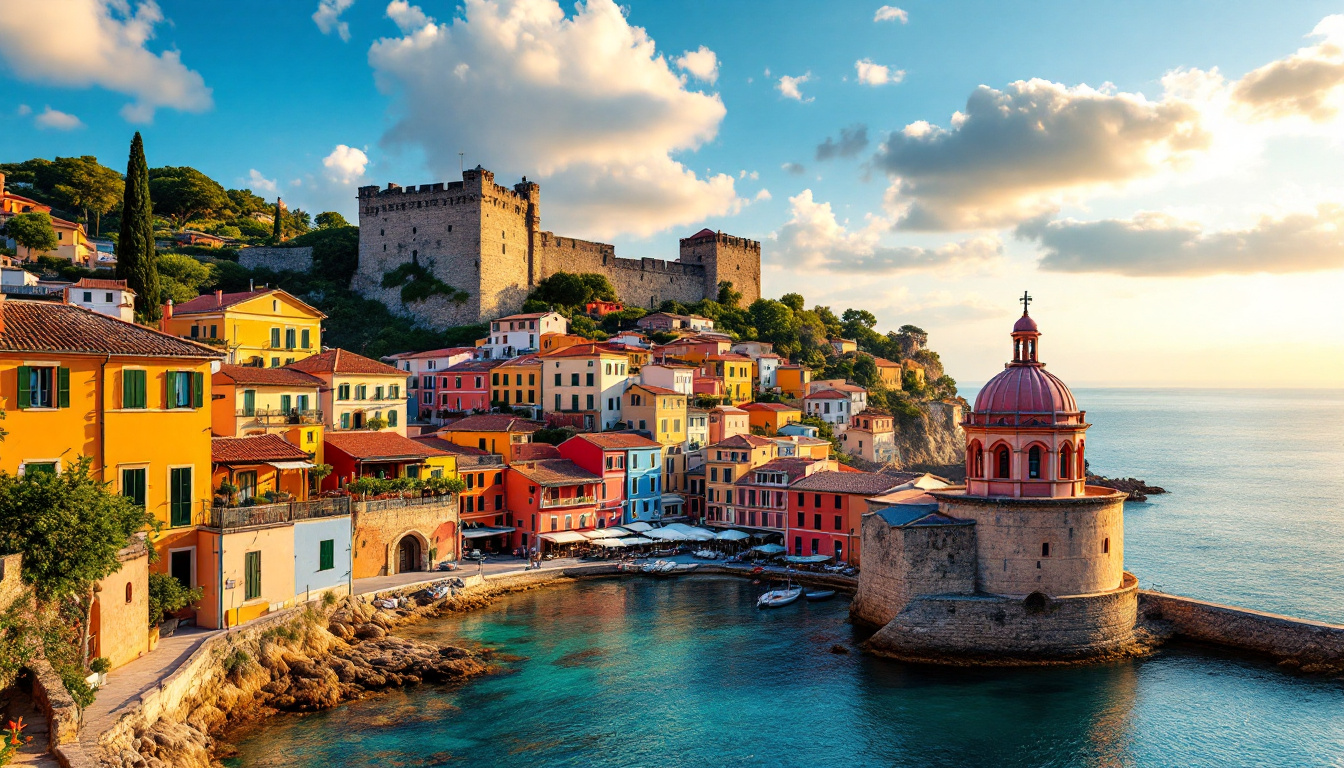Collioure captivates visitors with its extraordinary Mediterranean charm, where vibrant colored houses cascade down to a crystal-clear bay beneath the watchful gaze of a 13th-century royal castle. This French coastal jewel, barely three miles from the Spanish border, earned fame as the birthplace of Fauvism when Matisse and Derain arrived in 1905, forever changing modern art with their explosive colors inspired by this fishing village’s unique light.
A canvas come to life: The artistic heritage that defines Collioure
Walking Collioure’s winding streets feels like stepping into a painting. The town’s legendary light quality—clear, brilliant, and constantly shifting—continues drawing artists worldwide. Local galleries showcase contemporary works alongside tributes to the masters who found inspiration here.
“This light transforms everything it touches,” explains Marie Fontaine, third-generation gallery owner. “Artists come searching for what Matisse discovered, but each finds their own Collioure in these colors.”
Follow the “Chemin du Fauvisme” walking route, where reproductions mark spots where famous paintings were created, connecting past artistic revolutions to present-day beauty.
Between two worlds: The fascinating Catalan-French cultural blend
Collioure’s unique position created a distinctive cultural identity blending French sophistication with Catalan passion. Street signs appear in both languages, while local festivals like the Saint Vincent celebration showcase traditional sardana dancing alongside French maritime traditions.
This cultural fusion extends deliciously to the cuisine, where French technique meets Catalan flavors. Sample anchovies prepared using methods unchanged since the 16th century, alongside local Collioure wines grown on steep Mediterranean terraces.
The royal fortress where kings once watched the horizon
Dominating the harbor, Château Royal de Collioure stands as testament to centuries of strategic importance. Originally built by the Templars, expanded by Aragonese kings, and reinforced by military architect Vauban, its massive walls contain centuries of Mediterranean power struggles.
Explore ramparts offering spectacular views across the bay toward Spain, where the Pyrenees meet the Mediterranean in dramatic fashion—similar to other historic French villages where medieval architecture creates unforgettable landscapes.
Notre-Dame-des-Anges: The iconic church rising from the sea
Perhaps Collioure’s most photographed landmark, this church with its distinctive pink dome bell tower seemingly emerges directly from Mediterranean waters. Originally a lighthouse, the bell tower became the spiritual center of the fishing community, blessing vessels before dangerous journeys.
At sunset, when golden light bathes its weathered stones, the church creates silhouettes reminiscent of dramatic island landscapes where architecture and natural elements merge seamlessly.
Hidden coves and coastal treasures beyond the harbor
While most visitors remain near the central beaches, locals recommend exploring the coastal path toward Port-Vendres. Here, secluded coves with crystal waters reveal themselves between rocky outcroppings.
“The true magic of Collioure reveals itself in these quieter spaces,” shares Phillipe Laurent, lifelong resident. “Follow the path past the windmill, and you’ll find places where the Mediterranean feels like your private sanctuary.”
For adventurous travelers seeking natural wonders similar to hidden cascades in Croatia, the surrounding Pyrénées foothills offer spectacular hiking with sea views.
Beyond tourism: The authentic village behind the postcard
Early mornings reveal Collioure’s authentic character—fishermen preparing boats, bakers crafting traditional coca catalana flatbreads, locals gathering at café terraces before tourists arrive. These moments offer glimpses into a community preserving traditions despite tourism’s influence.
Venture into the upper town, where residential streets maintain rhythms unchanged for generations, offering cultural authenticity similar to preserved indigenous traditions elsewhere.
As Mediterranean sunlight fades into evening, Collioure transforms once more. Restaurant lights reflect across harbor waters, castle walls glow amber against deepening blue skies, and conversations blend French, Catalan, and travelers’ languages into a symphony as intoxicating as the local wines. Like discovering Kyoto’s meditative bamboo paths, Collioure offers rare moments where beauty, history, and authenticity converge in perfect harmony.
